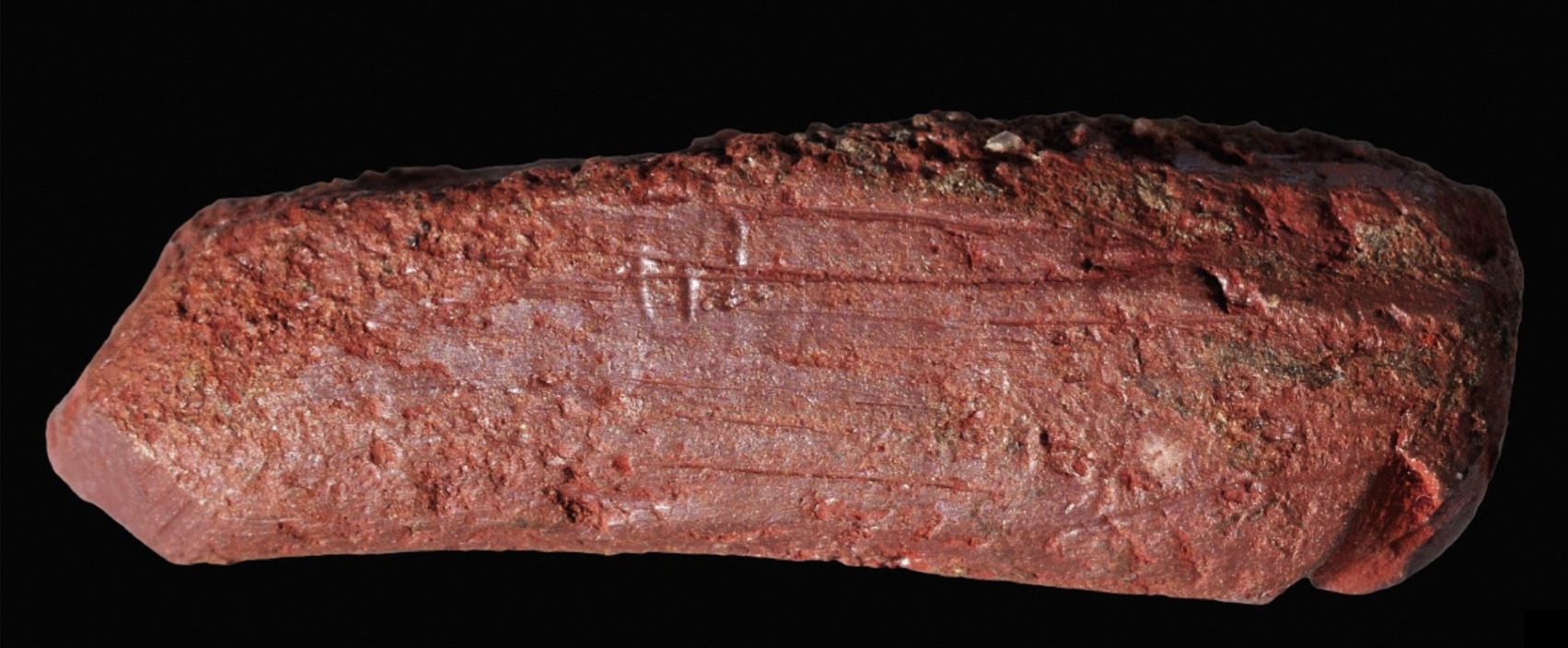Found: A Mesolithic Crayon
Ochre red was a popular color choice in prehistoric England.

Artistic expression—the ability to reproduce color, patterns, and visual likeness—is considered to be one of the defining characteristics of modern humans. Archaeologists digging in North Yorkshire, England, believe they have unearthed some early examples of the tools of artistic expression—including a prehistoric crayon and a pebble that was scraped to make red pigment. “One of the latest objects we have found looks exactly like a crayon; the tip is faceted and has gone from a rounded end to a really sharpened end, suggesting it has been used,” said Andy Needham, an archaeologist at the University of York, in a press release.
The two art tools were found on opposite sides of an ancient lake, now a peat bog, near Star Carr, a famous Mesolithic site where archaeologists had previously unearthed more than 30 antler headdresses. “I think color was probably always important to humans, and it perhaps might even have been important to yet earlier species,” Needham says. “And red ochre is common in very early humans sites in Africa, perhaps suggesting it has always been an important material in producing color, amongst other uses, for humans.”
Indeed, the red from ochre appears to have played an especially important role in the prehistoric palette. “We see it used for such a long period of time—the use of red ochre at Pinnacle Point in South Africa dates to around 160,000 years ago—and during the Mesolithic period it is commonly found sprinkled into burials across Europe, perhaps suggesting red had some symbolic significance in this act,” Needham adds.

These artifacts were not found in a burial, suggesting that they played some role in everyday life. According to Needham, red ochre was used as a medicine (antibacterial properties so it may have been sprinkled on wounds to prevent infection), as a natural sunscreen, and as insect repellent—in addition to all its artistic applications, from skin tanning to body paint to pigment for painting.
“For me [the crayon] is a very significant object and helps us build a bigger picture of what life was like in the area,” says Needham. “It suggests it would have been a very colorful place.”





























Follow us on Twitter to get the latest on the world's hidden wonders.
Like us on Facebook to get the latest on the world's hidden wonders.
Follow us on Twitter Like us on Facebook